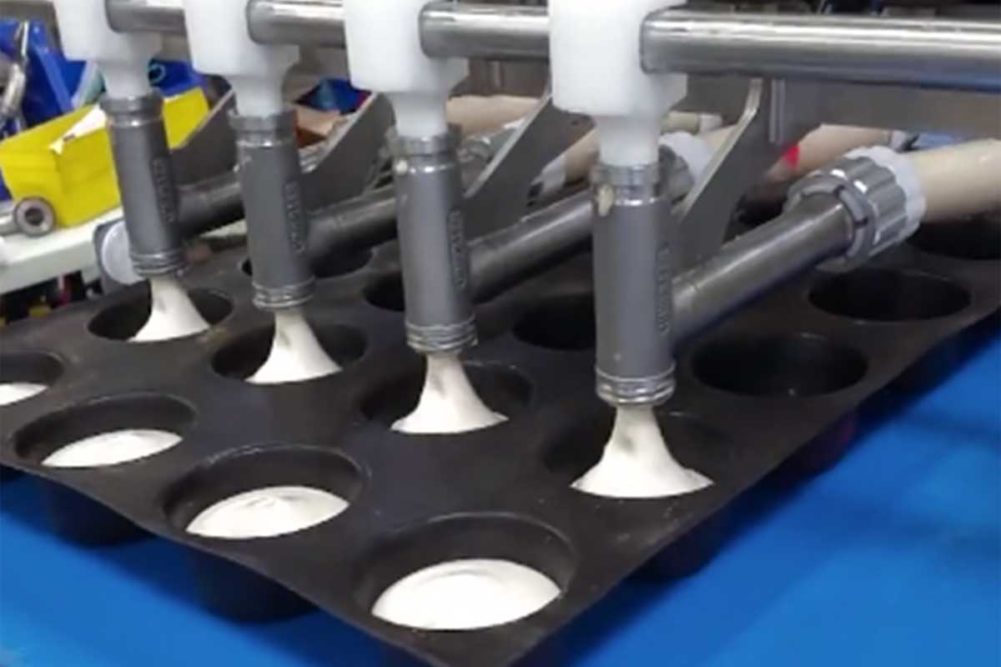Consumers always seem to be looking for a value-add to their food. They want something for their money and the calories they are about to consume. Whether that’s the antioxidants from some blueberries or added protein or fiber in a breakfast muffin, batter products are not immune to the demands of the health-conscious consumer, even though these applications tend to be on the decadent side.
Changing a batter formulation, whether adding protein and fiber or removing gluten, has an impact on the processability of those batters.
“These batters can be stickier, harder to handle and more sensitive to temperature rise,” said Ken Hagedorn, vice president, bakery sector, Handtmann Inc. “They feature more expensive ingredients and bakers want to retain the value of those investments. Maintaining inclusion integrity, especially with delicate ones like berries, large nut and grain pieces and chocolate chips.”
Changes in formulation mean changes in viscosity and flowability. These needs, as well as temperature sensitivity and inclusion preservation, require equipment that is flexible.
“Batters can vary from very flowable and self-leveling to stiff batters,” said Sonia Bal, director of global marketing, Unifiller Systems. “Bakers require the ability to deposit batters from small portions, such as for French macarons that require accurate and consistent placing, to depositing sizeable portions of batters into cheesecake pans. Some batters are very delicate and are highly aerated, such as angel food cake, requiring specific equipment considerations.”
Accommodating these specialized batters requires all the tricks of depositing. Bakers need to enhance flow to combat viscosity changes. Viscosity will also impact how deposits are cut off to ensure precise portioning. Optimizing all of this will help not only deliver an accurately weighed product but also the best finished product quality.
This article is an excerpt from the February 2022 issue of Baking & Snack. To read the entire feature on Depositors, click here.





